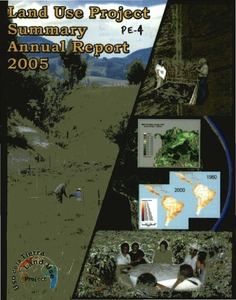The impacts of forestry decentralization on district finances, local communities and spatial planning: a case study in Bulungan District, East Kalimantan
The report describes the impacts of forestry decentralization on district finance, local communities and spatial planning, drawing on an 18-month research project in Bulungan District in East Kalimantan Province. It describes forestry management policies following the implementation of regional autonomy, and their impacts on district revenue and local livelihoods. The authors analyze district spatial planning, forest land use and community control over forest lands.
Working wetlands: classifying wetland potential for agriculture
This paper reports on a form of multi-criteria analysis that provides a formal approach for evaluating the suitability of a wetland for specific agricultural uses, and ensures that explicit consideration is given to the possible consequences of such utilization. The method is based on a hybrid of ideas taken from concepts and methodologies related to: environmental flow assessments, land suitability classification and the hazard evaluation procedures used in the design of dams.
The impact of agroforestry-based soil fertility replenishment practices on the poor in Western Kenya
Western Kenya is one of the most densely populated areas in Africa. Farming there is characterized by low inputs and low crop productivity. Poverty is rampant in the region. Yet the potential for agriculture is considered good. In the study described here, researchers looked specifially at soil fertility replenishment (SFR) systems...Focused on two specific systems -- the tree-based "improved fallow" system and the biomass transfer system -- the study compared rates of adoption in poor and nonpoor communities and evaluated the extent to which their adoption reduced poverty.
The impact of agroforestry-based soil fertility replenishment practices on the poor in Western Kenya
Western Kenya is one of the most densely populated areas in Africa. Farming there is characterized by low inputs and low crop productivity. Poverty is rampant in the region. Yet the potential for agriculture is considered good.
Land reform: Land settlement and cooperatives
This bulletin is issued by FAO as a medium for the dissemination of information and views on land reform and related subjects to the United Nations, FAO Member Governments and national and international experts and institutions. Articles are published in the original language (English, French or Spanish).
Land reform: Land settlement and cooperatives
This issue of Land Reform, Land Settlement and Cooperatives offers the reader a series of articles and information related to the discussions that will take place in March 2006 in Porto Alegre, Brazil, at the International Conference on Agrarian Reform and Rural Development (7–10 March). Needs have changed and there are new dimensions to previous concerns. Gender issues have been integrated into FAO activities, and Land Reform, Land Settlement and Cooperatives has published articles on how the rights of rural women have or have not been taken into account in agrarian reform programmes.
Land reform: Land settlement and cooperatives
This bulletin is issued by FAO as a medium for the dissemination of information and views on land reform and related subjects to the United Nations, FAO Member Governments and national and international experts and institutions. Articles are published in the original language (English, French or Spanish).
حالة الغابات في العالم 2005
تنشر حالة الغابات في العالم تقارير عن حالة الغابات وعن أحدث السياسات والتطورات المؤسسية والموضوعات الخاصة بقطاع الغابات.وفضلا عن ذلك تتيح حالة الغابات في العالم آخرالمعلومات المتعلقة بالسياسات الحرجية لتسهيل مناقشتها واتخاذ القرارات المتعلقة بغابات العالم.وتصدر حالة الغابات في العالم كل عامين باللغة العربية والصينية والإنجليزية والفرنسية والأسبانية.
Suplemento temático sobre los Bosques plantados de la Evaluación de los Recursos Forestales 2005 - Directrices para la elaboración de las tablas informativas nacionales sobre los bosques plantados
Réunion ministérielle sur «l’eau pour l’alimentation et l’agriculture»
Descubrir el potencial del agua para la agricultura - Hechos
La población mundial crecerá de cerca de los 6 000 millones de habitantes de hoy día a más de 8 000 millones en el año 2030. Por consiguiente, en los próximos 30 años habrá que alimentar a 2 000 millones de personas más. La FAO estima que la producción mundial de alimentos deberá incrementarse en cerca del 60 por ciento para alimentar a esa creciente población.





